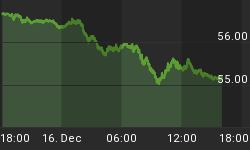This is what a number of congressmen and senators have been saying of late. And to them I say, "Mission Accomplished!" As Chart 1 shows, in the 12 months ended July 2011, cumulative total federal outlays were 2.69% higher than cumulative federal outlays in the 12 months ended July 2010. The average year-over-year percent change in 12-month cumulative outlays from 1956 through today has been 7.58%.

And with 12-month cumulative total federal receipts growing at 8.76% (see Chart 2), the cumulative deficit in the 12 months ended July 2011 was $1.225 trillion, $36 billion less than the cumulative deficit in the 12 months ended July 2010 (see Chart 3). With continued fiscal "progress" of this nature, S&P will be upgrading U.S. sovereign debt faster than the Fed can change its economic forecast!


















